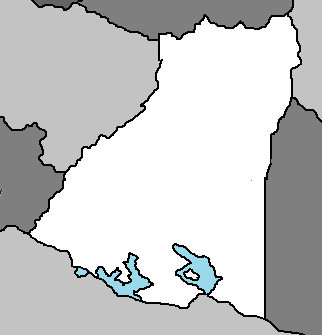Arenacia
Republic of Arenacia | |
|---|---|
|
Flag | |
 | |
| Capital and largest city | Alolis |
| Official languages | French, Spanish |
| Recognised national languages | English, Aethnoan, Nuali, Kitta, Guanr, Tanyiunan |
| Government | Unitary parliamentary constitutional republic |
| Elisabeth Aguirre | |
| Population | |
• 2020 estimate | 15,382,000 |
| Date format | mm-dd-yyyy |
The Republic of Arenacia is a landlocked nation in central Euronia bordered by Stasso to the north, Tyrtha and Terevi to the east, Selle to the west, and Avergnon to the south. Its capital and largest city is Alolis. The country has a population of 15.3 million people. The current President of Arenacia is Elisabeth Aguirre, who has been in office since 2019. The sovereign state of Arenacia is a constitutionally unitary state. One-third of the country is within the Asarana Mountains. The country's population is multiethnic, with French and Spanish being the official and predominant languages, although 36 indigenous languages also have official status. Arenacia is a member of the CCA, ACES, and CTO. It is a developing country. Its main economic activities include agriculture, forestry, fishing, mining, and manufacturing goods such as textiles, clothing, refined metals, and refined petroleum. Arenacia is very rich in minerals, including tin, silver, lithium, and copper.
History
Prehistory
Antiquity
Middle Ages
Modern Era
21st Century
Geography
The geography of Arenacia is characterized by its four main natural regions which present their own unique characteristics, from the Asarana Mountains to the west shared with Selle; the southern arable lake region which is shared with Avergnon; the south-eastern flatlands shared with Terevi; and the north-eastern hill regions shared with Stasso and Tyrtha. With the exception of the semi-arid climate of the steppe in the south-eastern section, the country has adequate water resources. There are numerous rivers and lakes in Arenacia used for swimming, fishing and a range of water sports.
Most of the northern half of the country is boreal forest, while the Asarana Mountains along the western boundary are largely temperate coniferous forests of the Arenacia Mountain forests and the Tastia foothills forests. The southern quarter of the country is prairie, ranging from shortgrass prairie in the southeastern corner to mixed grass prairie in an arc to the west and north of it. The central aspen parkland region extending in a broad arc between the prairies and the forests, from the capital Alolis and to the middle of the country, contains the most fertile soil in the country and most of the population. Much of the unforested part of Arenacia is given over either to grain or to dairy farming, with mixed farming more common in the north and center, while ranching and irrigated agriculture predominate in the south.
Climate
Biodiversity
Demographics
Religion
Languages
Ethnicity
Cities
Government and politics
The government of Arenacia takes place within the framework of a presidential participatory democratic republic as established in the Constitution of 1982. In accordance with the principle of separation of powers, government is divided into three branches: the executive branch, the legislative branch and the judicial branch.
As the head of the executive branch, the President of Arenacia serves as both head of state and head of government, followed by the Vice President and the Council of Ministers. The president is elected by popular vote to serve a single four-year term. At the provincial level executive power is vested in department governors, municipal mayors and local administrators for smaller administrative subdivisions, such as corregimientos or comunas. All regional elections are held one year and five months after the presidential election.
The legislative branch of government is represented nationally by the Congress, a bicameral institution comprising a 166-seat Chamber of Representatives and a 102-seat Senate. The Senate is elected nationally and the Chamber of Representatives is elected in electoral districts. Members of both houses are elected to serve four-year terms two months before the president, also by popular vote.
The judicial branch is headed by four high courts, consisting of the Supreme Court which deals with penal and civil matters, the Council of State, which has special responsibility for administrative law and also provides legal advice to the executive, the Constitutional Court, responsible for assuring the integrity of the Arenacia constitution, and the Superior Council of Judicature, responsible for auditing the judicial branch. Arenacia operates a system of civil law, which since 1982 has been applied through an adversarial system.
Foreign Relations
Military
The executive branch of government is responsible for managing the defense of Arenacia, with the President commander-in-chief of the armed forces. The Ministry of Defence exercises day-to-day control of the military and the Arenacian National Police. Arenacia has 125,461 active military personnel. The military is divided into three branches: the National Army of Arenacia; the Arenacia Air Force; and the Arenacia Border Force. The National Police functions as a gendarmerie, operating independently from the military as the law enforcement agency for the entire country. Each of these operates with their own intelligence apparatus separate from the National Intelligence Directorate of Arenacia. Most of Arenacia's military supplies are funded or provided by Drambenburg, which is their main trading partner.

